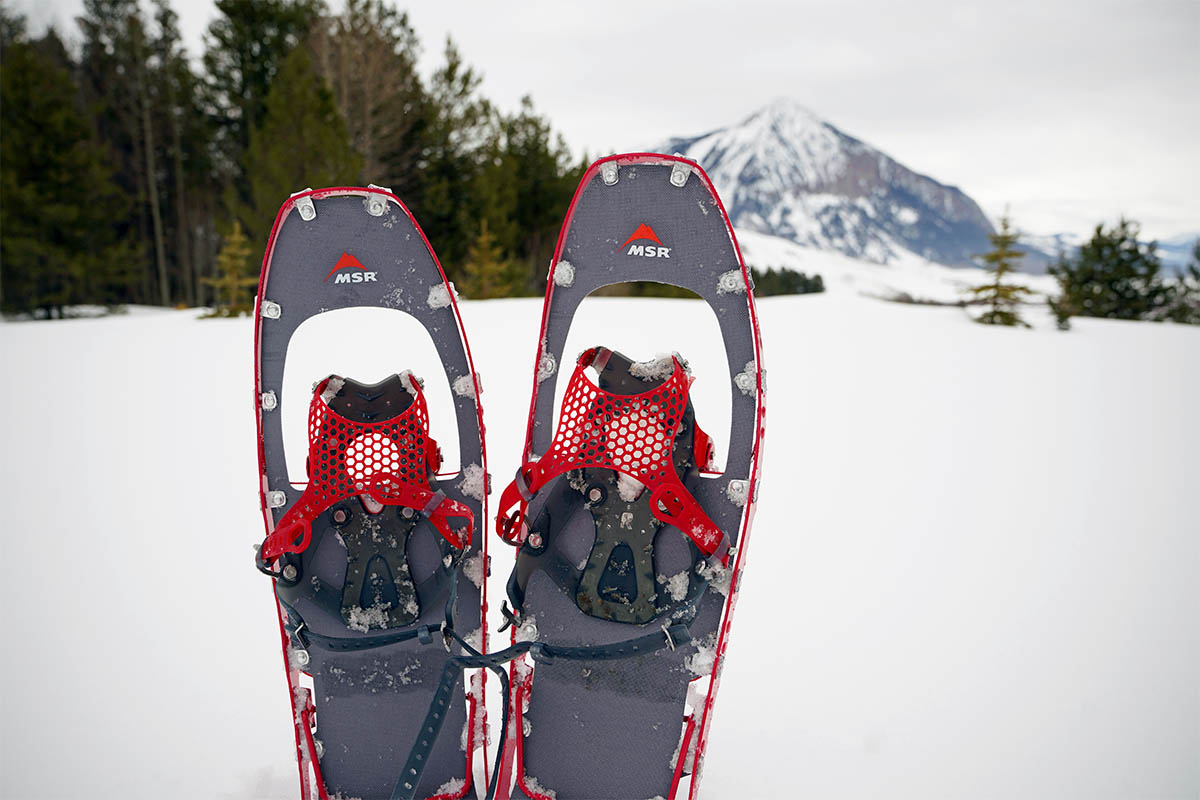
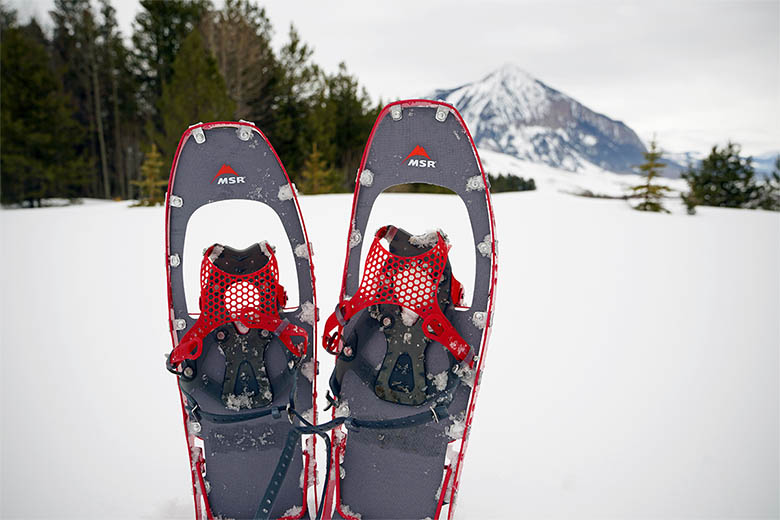
Switchback Travel


Switchback Travel
Price: $320
Length: 25 in. (22 and 30 in. available)
Weight per pair: 4 lbs. 5 oz.
What we like: Puts it all together with excellent traction, floatation, and comfort.
What we don’t: Pricey and overkill for casual outings.
See the MSR Lightning Ascent See the Women's Lightning Ascent
MSR’s snowshoe collection runs the gamut from the entry-level and affordable Evo Trail to the top-end Lightning Ascent featured here. This premium design puts it all together, including class-leading traction, excellent flotation, and great overall hiking comfort. It’s true that the Lightning Ascent is expensive at $320 and overkill for casual outings and flat terrain, but it’s the best all-around performer we've tested. Below we break down our experience with the Lightning Ascent. To see how it stacks up to the competition, see our article on the best snowshoes.
Available in three lengths ranging from 22 to 30 inches, the MSR Lightning Ascent offers excellent flotation over a wide variety of terrain. The 22-inch length is ideal for light to moderate snowfall, the 25-inch variation (tested here) provides even more float in powdery conditions, and the 30-inch model is ideal for those heading out into truly deep snow. In addition, MSR sells separate tails for $60 that add 5 more inches of length. This makes the total price tag even higher than the already-spendy $320 MSRP, but it does add a nice dose of versatility: you can get the appropriately sized shoes for the conditions you experience most and have the tails on standby for fresh powder or bigger adventures. And for decking on the Lightning Ascent, MSR chose a TPU-coated nylon that is both tough and much quieter on the snow than the plastic decking used on their more affordable Revo and Evo lines.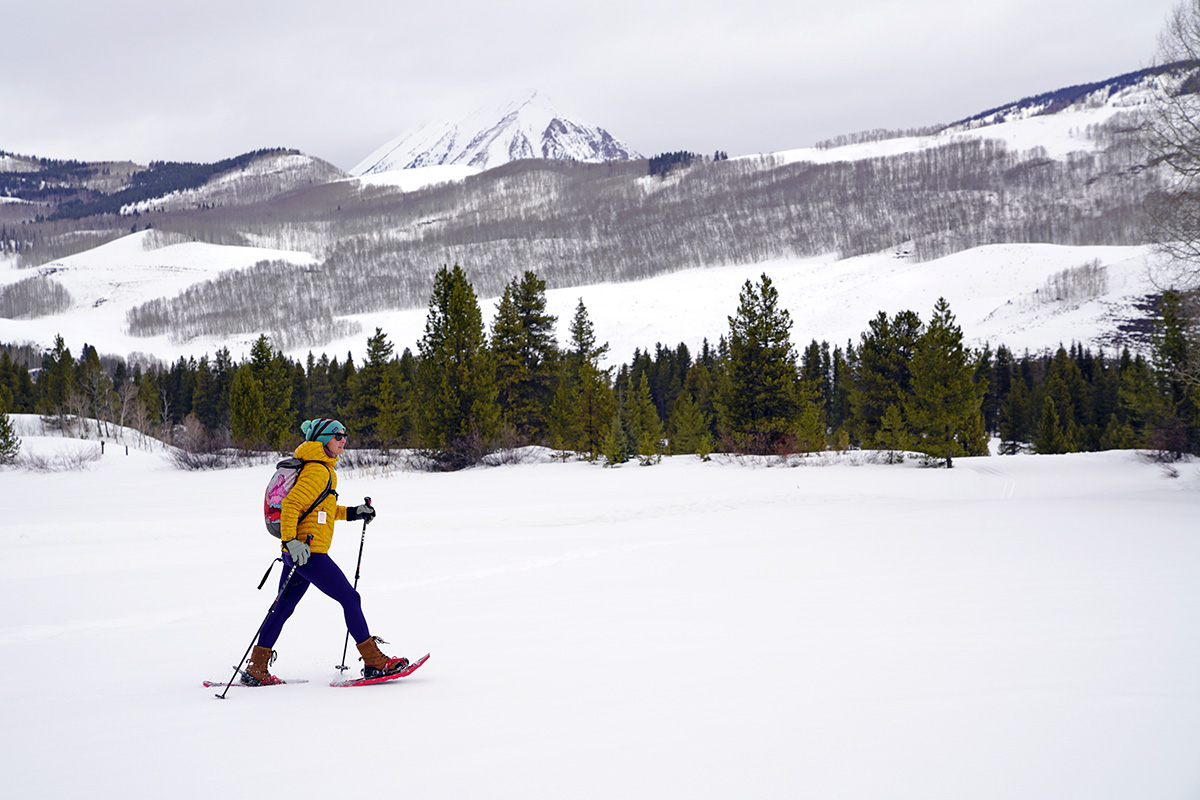
Simply put, the Lightning Ascent offers best-in-class traction. The design features a claw-style crampon under the ball of the foot, two steel bars running horizontally (MSR’s cheaper snowshoes have one), and additional traction down both side rails. In terms of quality, the steel is grippy and thick, and you get nearly full coverage across the base of the snowshoe. All in all, for steep climbs, traversing, and icy terrain, you simply won’t find better grip. For comparison, premium alternatives like the Tubbs Mountaineer and Crescent Moon’s Gold 9 essentially have two claw-style crampons but no added traction down the side rails, and TSL’s Symbioz Elite has one claw plus a row of burly steel spikes. None of those snowshoes can match the diversity or volume of traction found on the Lightning Ascent.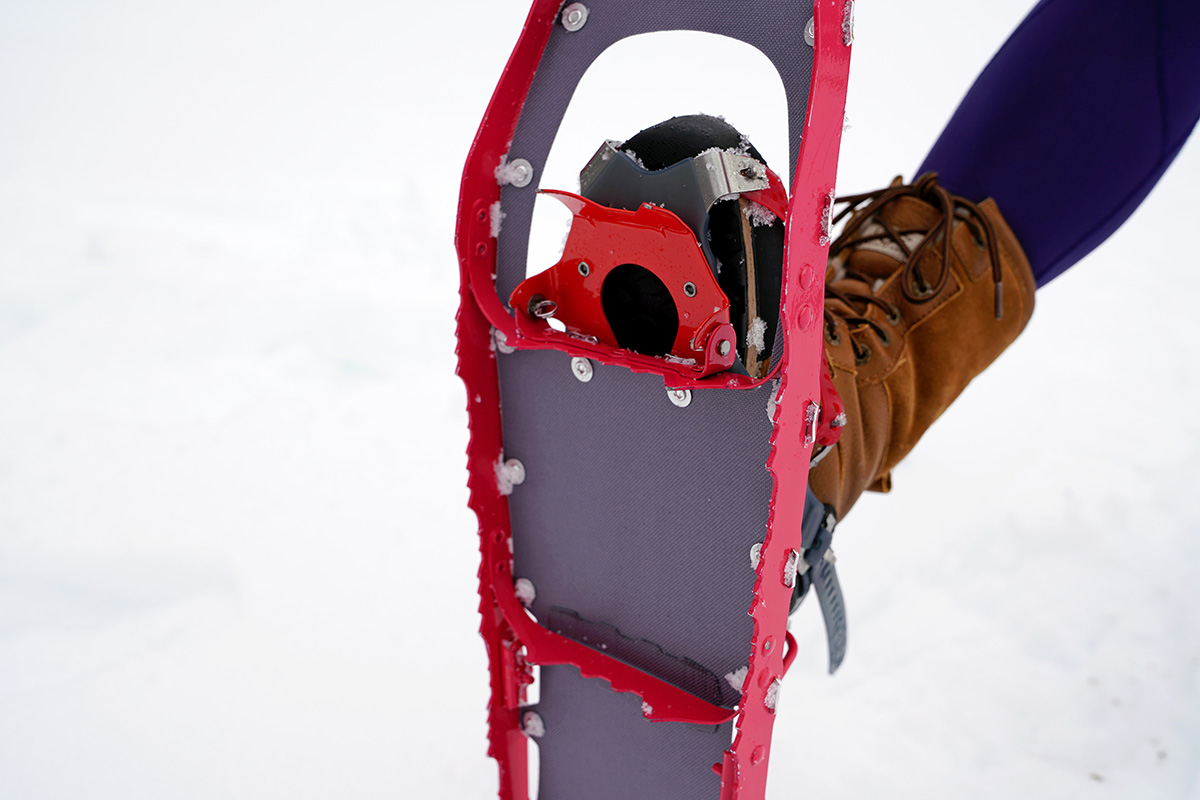
High-end snowshoes tend to have superior bindings, and the MSR Lightning Ascent is no exception. Upgraded last year, the “Paragon” binding (also found on MSR’s Revo Ascent) replaced the old three-strap system with webbing around the top half of the foot for better hold. There still are three straps, but instead of having to redo all three every time you step in and out of the shoe, the Paragon allows you to set the top two and leave them in place, meaning only the heel strap needs to be cinched each time you head out. You may need to tighten the two smaller straps to maximize hold, but it’s still a much better and easier-to-use system than the old variation. And perhaps most importantly, you get a real evenness around the foot, which makes the Lightning Ascent easier to wear and comfortable on longer excursions and when tackling more challenging terrain.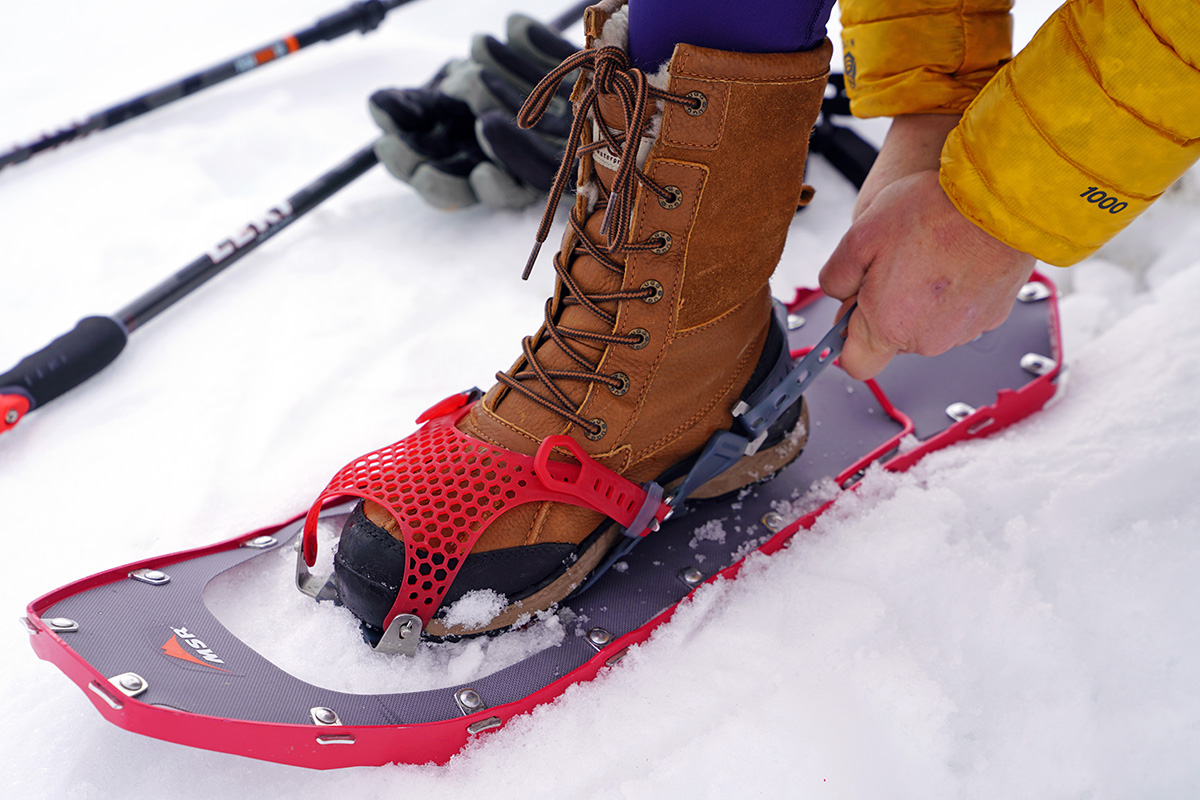
That said, we’ve still experienced some of the same issues we had with the original model. Mainly, if you’re not careful to buckle down all the straps securely in place, they can come loose and require readjustment/refastening on the trail, which can be a real hassle with snow and ice caked up underneath. On one outing in particular, one of our testers was walking her dog after a big snowfall in Boulder’s Chautauqua Park when her heel started repeatedly popping out of the binding, leaving the snowshoes loose and flopping around. To remedy the issue, she had to pull off the trail and spend a good chunk of time cleaning off the bindings completely and starting from scratch to ensure all straps were tightened snugly. For this reason, we still like the BOA system best, which is a dial that evenly cinches the entire binding into place (found on models like the Tubbs Flex VRT and Wayfinder), but Paragon nevertheless is MSR’s best system yet and a solid improvement over past generations.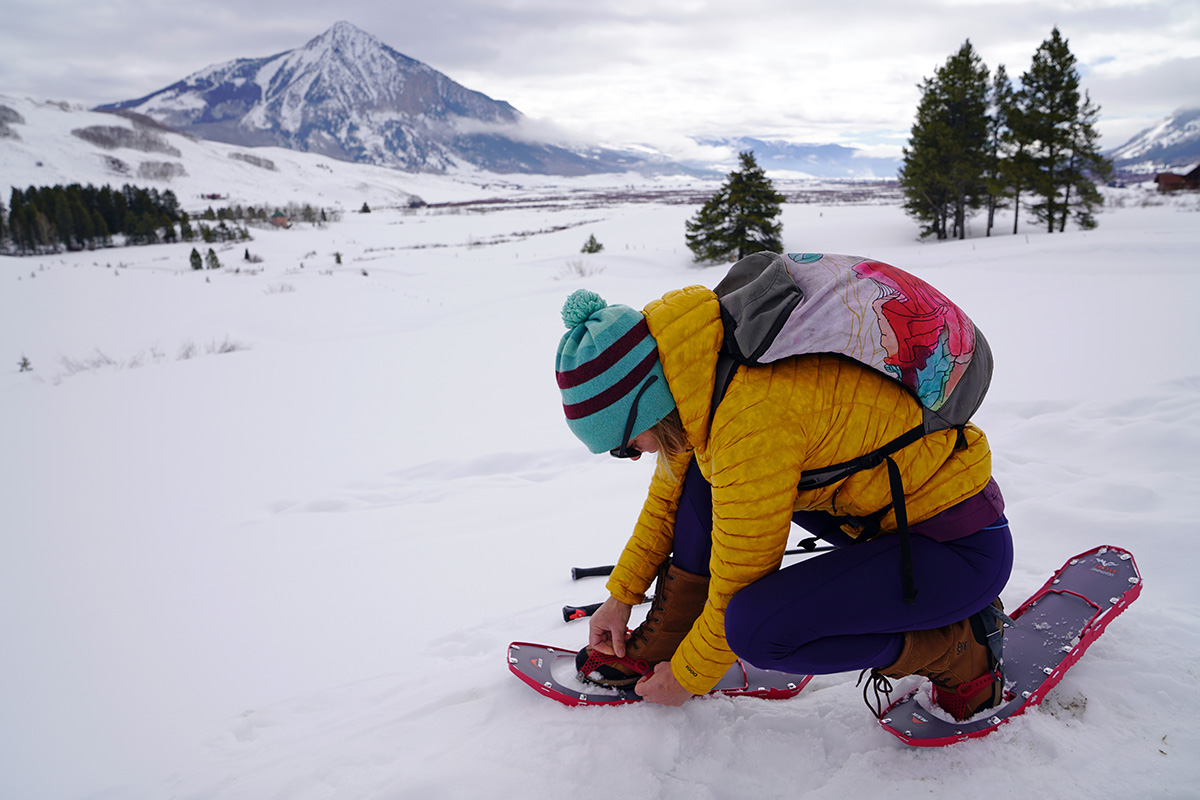
As I touched on above, the MSR Lighting Ascent is offered in three lengths: 22, 25, and 30 inches (you also can buy 5-in. tails for the Lightning Ascent for an additional $60). I tested the 25-inch variation, which has proven to be an ideal companion for most conditions. The 22-inch model is also perfectly serviceable for hardpack and light to moderate snow, but these are performance shoes and many people will be tackling more challenging terrain or heading into deeper snow. At the other end of the spectrum, the 30-inch version gets you a true backcountry shoe that can handle substantial powder and a heavy load (an important factor if you'll be hauling a backpack), and particularly with the tails added. Among popular designs, only the Tubbs Mountaineer is longer at 36 inches, although that build is slightly more tapered at the end (less surface area translates to less floatation).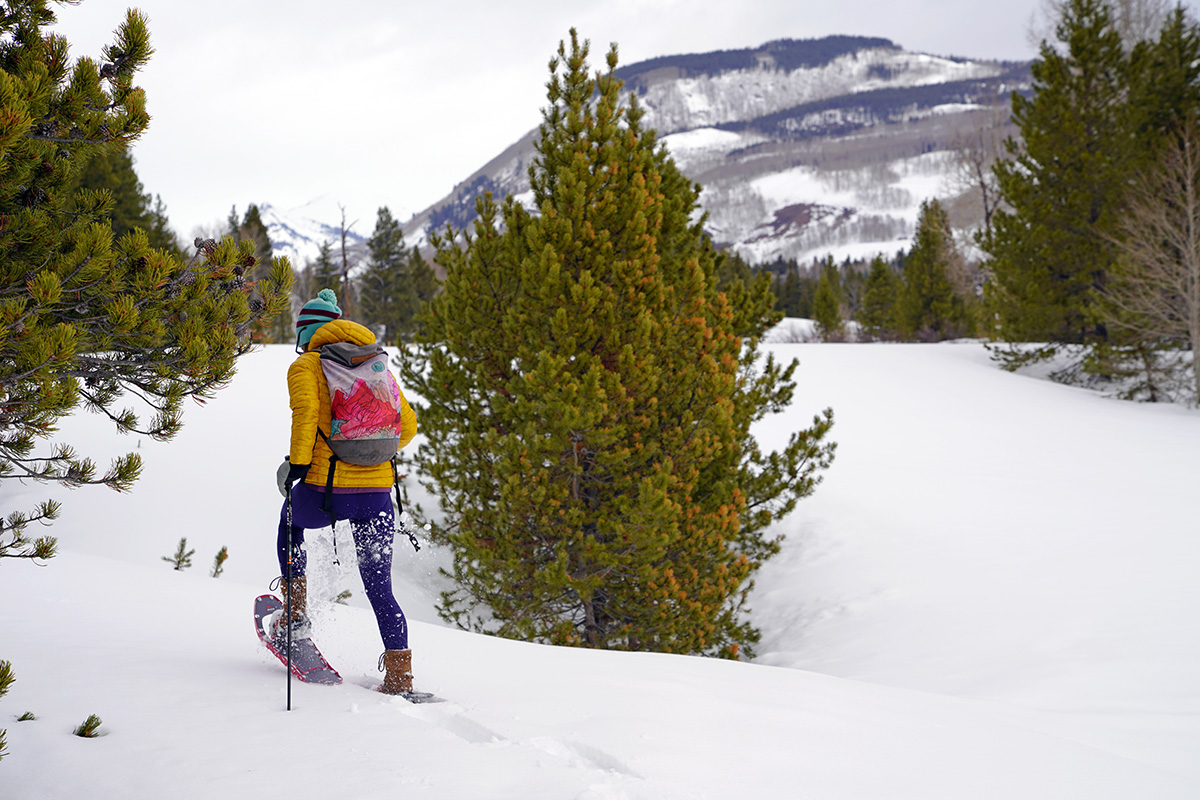
Length also correlates with load capacity, and each size has a recommended maximum load (180 lbs. for the 22-inch version, for example). You won’t break the snowshoe by going over the recommended capacity, but it will have a negative effect on floatation, and it’s good to keep this mind when choosing a length (and importantly, this number includes the snowshoer plus gear). Stepping up the 25-inch model boosts the load limit to 250 pounds, and the 30-inch Lightning Ascent can support up to 280 pounds.
At 4 pounds 5 ounces for the 25-inch version, the MSR Lightning Ascent is far from the lightest snowshoe on the market. But to be fair, the steel and nylon combination weighs more than plastic and contributes to the overall heft. For example, MSR’s popular Evo Trail comes in at 3 pounds 9 ounces, but you compromise in length (only a 22 in. model is offered), traction, and durability. The similarly constructed TSL Symbioz Elite is the same weight for a slightly shorter length (23.5 in.), and the Tubbs Mountaineer is much heavier at 4 pounds 14.4 ounces for the 25-inch option.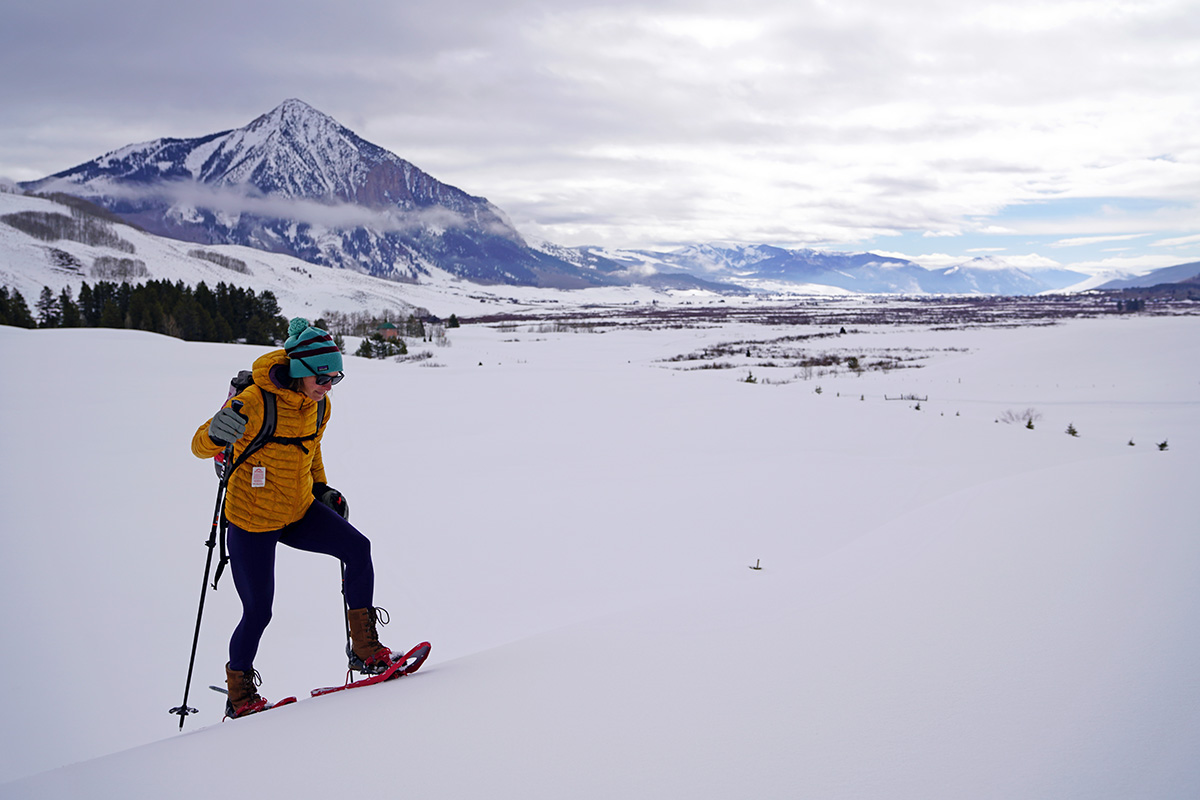
In practice, most people aren’t carrying snowshoes on their back, and even on longer days, you likely won’t notice a big difference in weight between the various pairs (the Tubbs Mountaineer is one exception). Casual snowshoers certainly can shave some ounces and cash with a more basic design like the MSR Evo Trail, but the Lightning Ascent wastes no weight: the webbing in the binding is supportive yet light, the steel crampons work extremely well, and the nylon decking is tough while still keeping overall heft in check.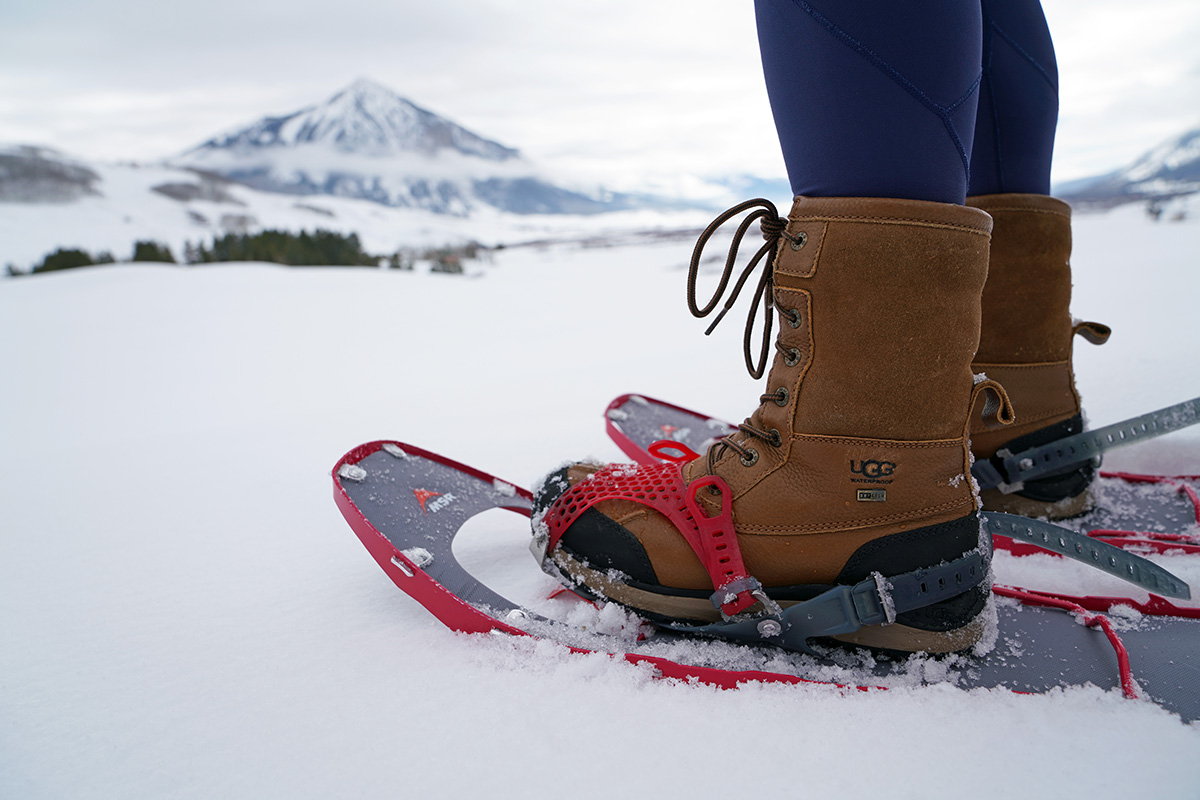
Over many years of testing outdoor gear, we’ve found that MSR products are very well-made in general and stand the test of time, and the Lightning Ascent is exactly what we’ve come to expect from the brand. The nylon decking is high-quality (MSR calls it ballistic-grade), the steel crampons are impressively thick and tough, and the rubber and buckles on the bindings are hardwearing and nicely constructed. The nylon on the Lightning Ascent can be punctured—crampons are sharp, and a human can have a lot of force while wearing them and stepping down—but we've tested multiple generations of the design and have never had an issue. All in all, the Lightning Ascent certainly isn’t cheap, but you’d be hard-pressed to find a better-built model.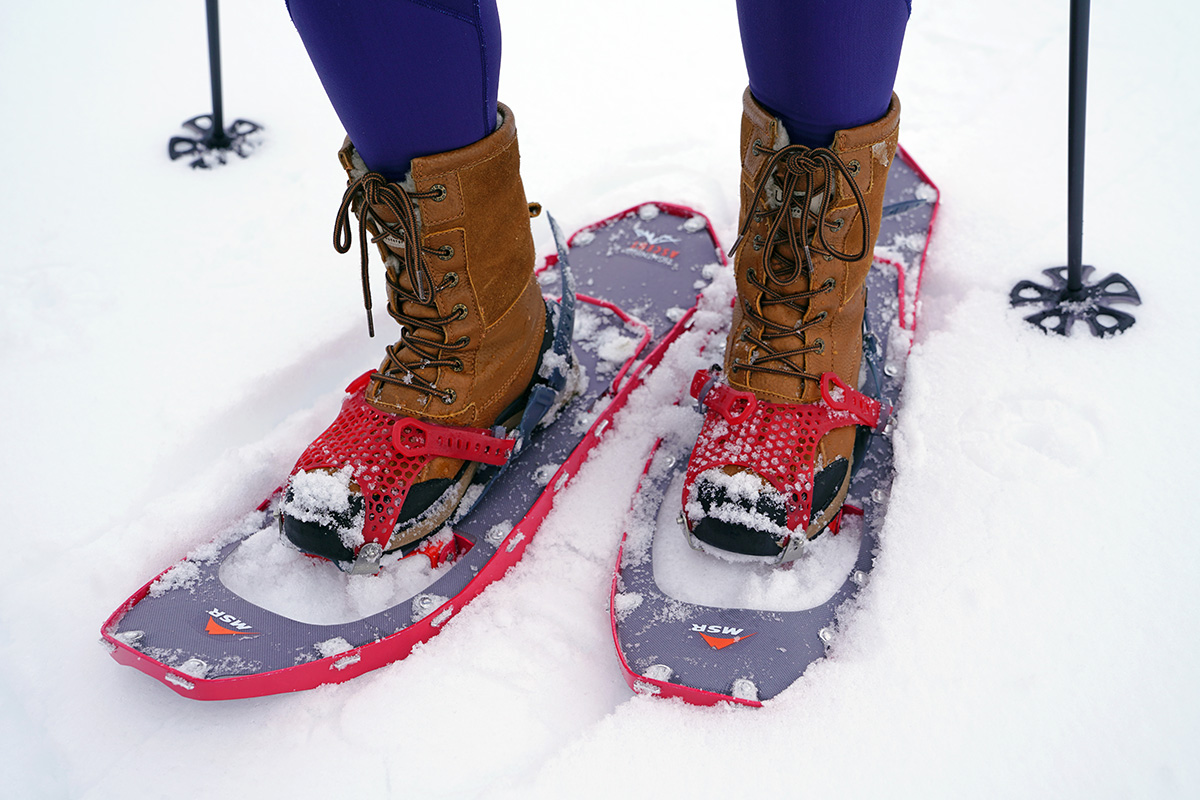
We put the top-of-the-line Ascent variation of the Lightning to the test for this review, and the lineup also includes trimmed-down Trail and Explore models, as well as women’s-specific variations. The Lightning Trail ($220) is the most basic of the grouping, with a simpler, strap-based binding system and no heel risers. The Lightning Explore is a step up in price at $280 but includes a riser and uses MSR’s HyperLink Binding, which boasts EVA foam and a two-strap ratcheting system for easy entry and exit (we still prefer the Paragon for its security and all-day comfort). The women’s models cost the same as their men’s counterparts, although the women’s Lightning Ascent is only offered in 22- and 25-inch options.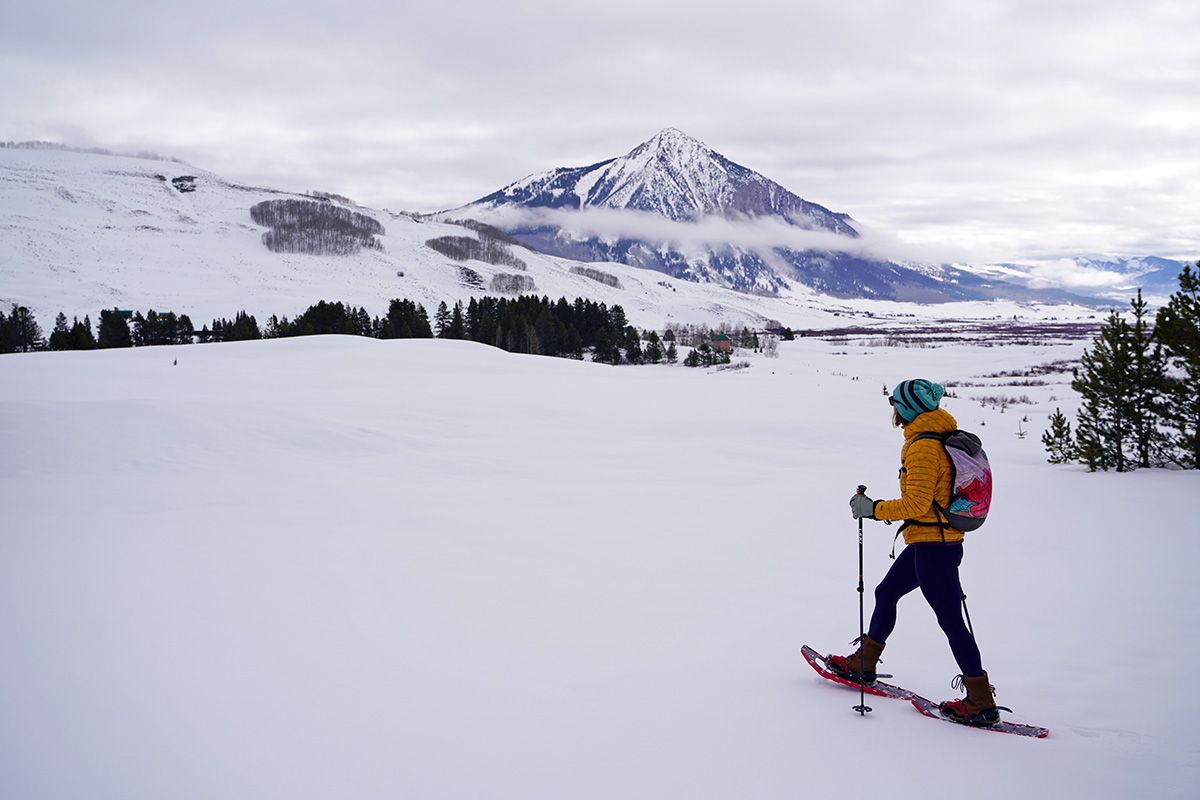
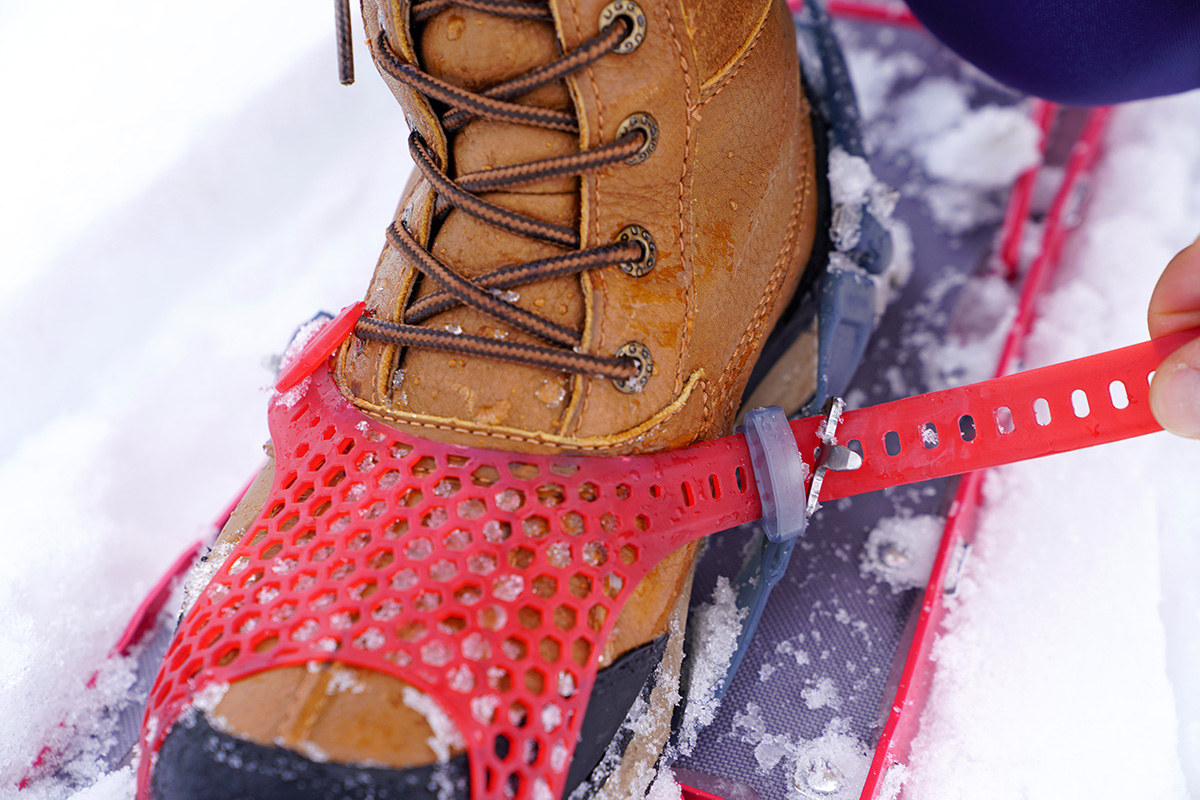
| Snowshoe | Price | Length(s) | Weight | Decking | Crampon | Heel Lift |
|---|---|---|---|---|---|---|
| MSR Lightning Ascent | $320 | 22, 25, 30 in. | 4 lbs. 5 oz. | Nylon | Steel | Yes |
| MSR Revo Ascent | $260 | 22, 25 in. | 4 lbs. 10 oz. | Plastic | Steel | Yes |
| Tubbs Mountaineer | $270 | 25, 30, 36 in. | 5 lbs. 5 oz. | Nylon | Steel | Yes |
| TSL Symbioz Elite | $280 | 20.5, 23.5, 27 in. | 4 lbs. 5 oz. | Composite | Steel | Yes |
| MSR Evo Trail | $140 | 22 in. | 3 lbs. 9 oz. | Plastic | Steel | No |
MSR’s Lightning Ascent is our top-rated snowshoe this season for its combination of traction, flotation, and comfort. Staying within MSR’s lineup, their Revo is the mid-range alternative to the high-end Lightning. Essentially, the Revo Ascent takes much of the excellent traction and Paragon bindings of the Lightning Ascent and combines it will the plastic decking of the entry-level Evo line. The result is a considerable $60 cost savings, although traction is a slight step down. And the Revo Ascent is only offered in 22- and 25-inch versions, which limits its appeal for true backcountry powder use. To us, MSR’s Revo line is too much of a tweener: we would rather spend the extra $60 for the nylon decking on the Lightning Ascent, which is more comfortable and much quieter on the snow, or go with the cheaper MSR Evo Trail below. 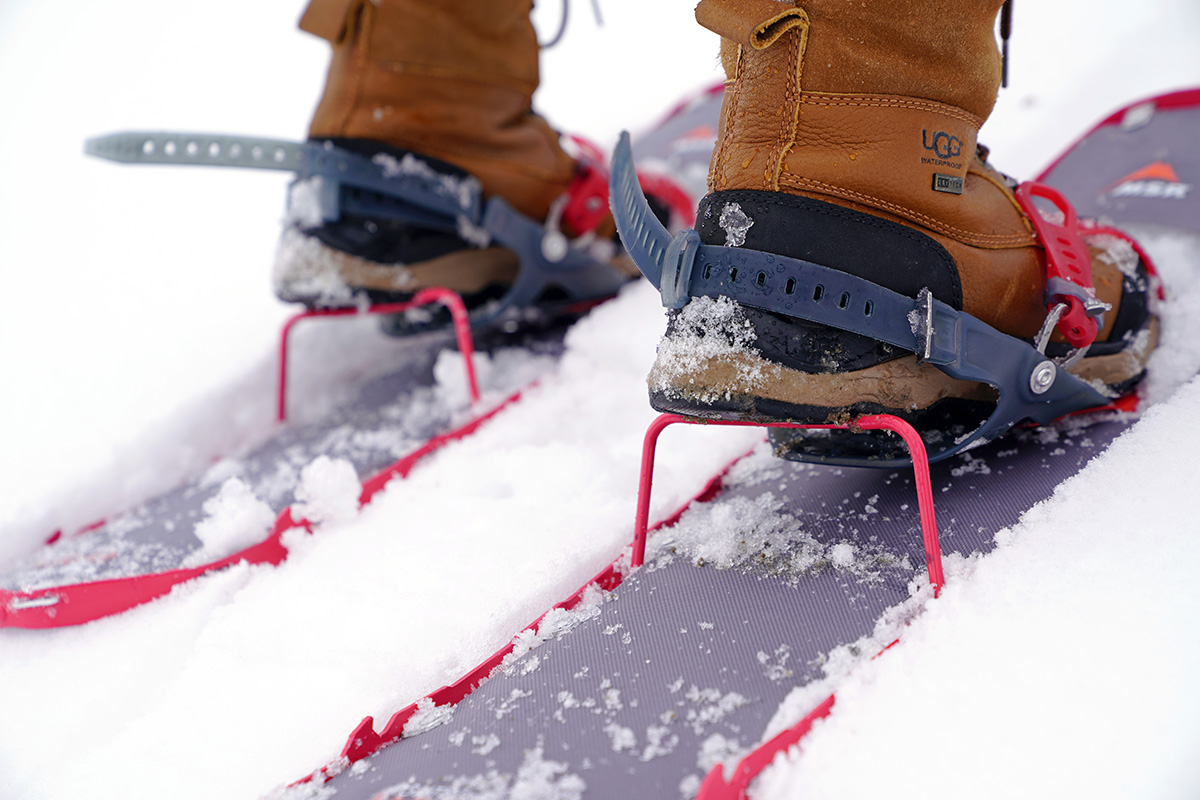
The Tubbs Mountaineer is a classic backcountry snowshoe. It’s offered in lengths up to 36 inches (the longest model in our snowshoe round-up), has a very elaborate binding system that keeps your foot snugly in place, and is comfortable for longer winter adventures. Additionally, with two large, claw-style crampons on the bottom, the Mountaineer is quite grippy on steeper ascents, although it can’t quite match the bite on the MSR. And it’s a heavy shoe overall, with the 36-inch version clocking in at a hefty 5 pounds 5 ounces (although the 30-in. Lightning Ascent is 4 lbs. 14 oz., plus 9 oz. for the tails, or 5 lbs. 7 oz. total). All in all, we do appreciate the lower cost of the Tubbs Mountaineer, but the MSR is grippier and the better shoe for steep, challenging terrain.
France-based TSL might not be a household name in the U.S., but they make quality all-around designs. The Symbioz Elite is their top-end model at $280 and comes in three lengths up to 27 inches. Overall, the Symbioz Elite is one of the most capable snowshoes we’ve ever worn: you get an ultra-advanced binding system that’s more comfortable than the MSR and has memory (meaning you don’t have to start from scratch adjusting the straps each time), along with plush padding over the top of the foot. The decking is composite, meaning it has more give and flexibility than some of the cheaper plastic models, and we also found the TSLs to be quieter on the snow. It’s not as grippy as the MSR over steep and icy ground and its narrower profile doesn't float as well in the deep stuff, but for those who prefer moderate terrain and like to go on longer winter adventures, the TSL is a viable alternative for $40 less.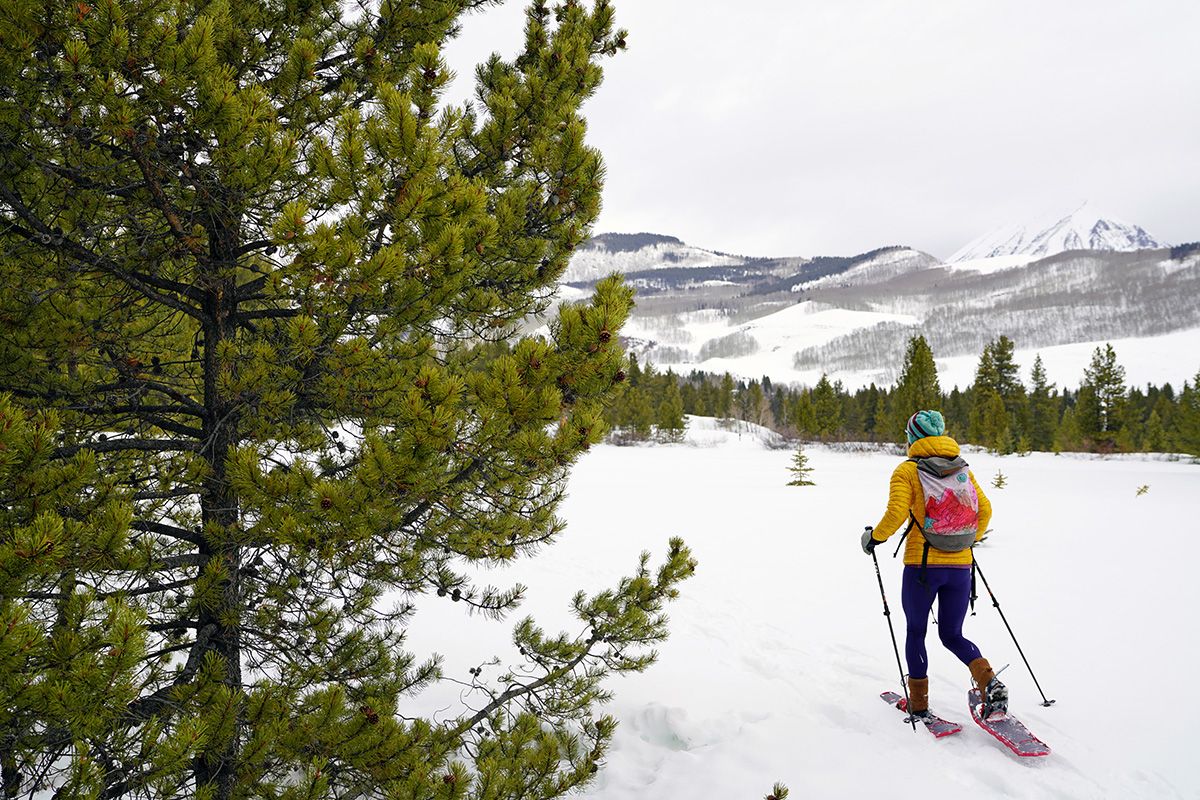
For many casual snowshoers, the MSR Evo Trail is a great way to save. It won’t take you into super deep snow (it’s offered in one 22-in. length with optional 5-in. tails), the plastic decking is louder than the nylon on the Lightning Ascent, there’s no heel lift, and the bindings aren’t as easy to put on, but it’s a still very capable snowshoe for less than half the cost ($140 total). And importantly, throughout testing, we found grip to be very good for the price with one steel bar running horizontally along with sturdy traction on the side rails (for more, see our in-depth Evo Trail review here). If you plan on snowshoeing a lot, covering longer distances, or taking on steep and icy terrain, the Lightning Ascent is the premier snowshoe on the market. For groomed trails and shorter outings, the Evo Trail may be everything you need and nothing you don’t.
If you’re thinking about buying gear that we’ve reviewed on Switchback Travel, you can help support us in the process. Just click on any of the seller links above, and if you make a purchase, we receive a small percentage of the transaction. The cost of the product is the same to you but this helps us continue to test and write about outdoor gear. Thanks and we appreciate your support!
Depending on the seller, most products ship free in the United States on orders of $50 or more. International shipping availability and rates vary by seller. The pricing information on this page is updated hourly but we are not responsible for inaccuracies.